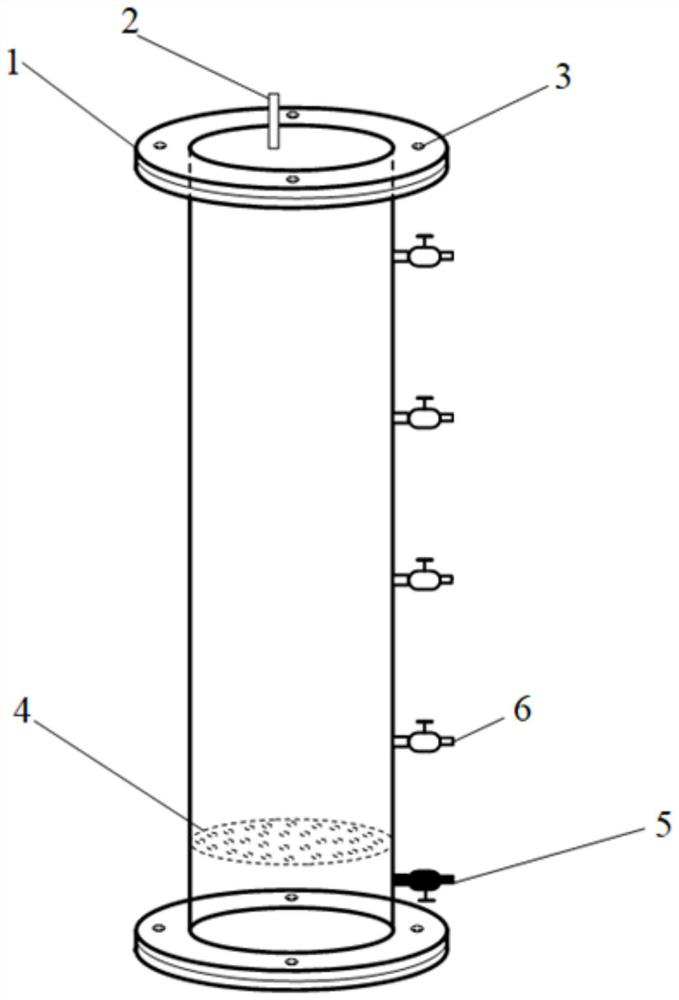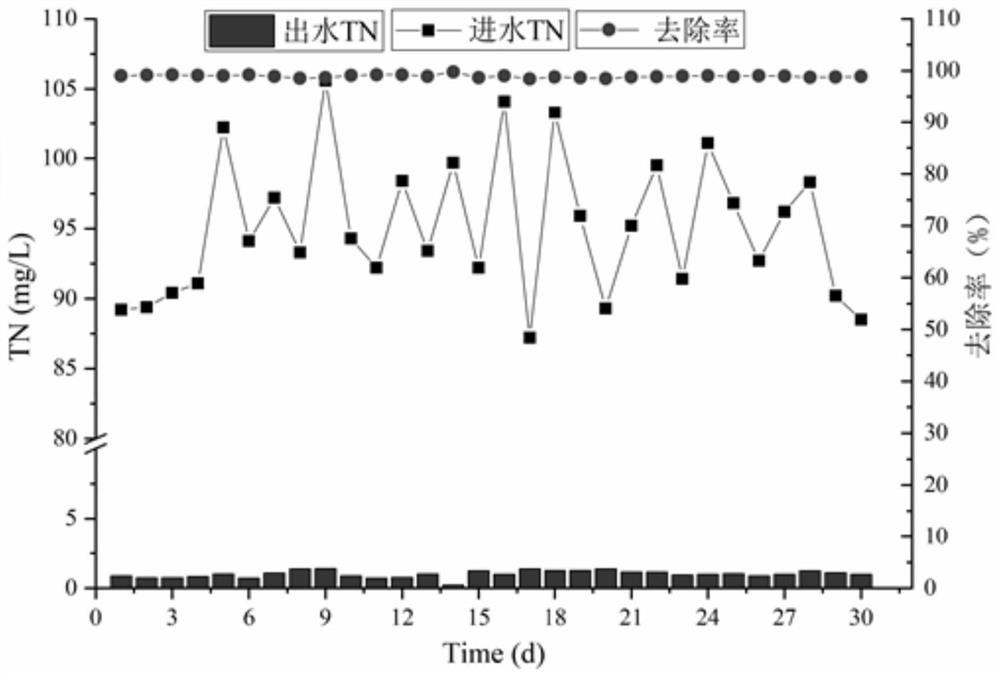Construction method and application of phycomycete symbiotic denitrification biological filter
A technology of algae-bacteria symbiosis and construction method, which is applied in chemical instruments and methods, biological water/sewage treatment, water pollutants, etc., can solve the problems of difficult treatment, increase treatment cost, and produce by-products, etc., and achieve high-efficiency phosphorus removal , to achieve the effect of standard discharge and rapid removal
- Summary
- Abstract
- Description
- Claims
- Application Information
AI Technical Summary
Problems solved by technology
Method used
Image
Examples
Embodiment 1
[0035] The algae symbiotic denitrification biological filter is made of transparent acrylic plate, cylindrical, with a diameter of 200mm and a height of 1200mm. The water filling body without filler is about 10.4L. The filler uses carbon ceramsite with a diameter of 5mm-20mm. The filler is made of The support layer 4 at the upper end of the water inlet 5 is added to the lower end 20mm of the uppermost liquid intake port 6 (i.e., the water outlet), and the effective water body of the biological filter after filling is about 3.1L;
[0036] figure 1 It is a schematic diagram of the structure of algae-bacteria symbiotic denitrification biological filter; figure 2 It is the physical picture of algae-bacteria symbiotic denitrification biological filter.
[0037] (1) Preparation of artificial simulated mariculture tail water: add 1667g of sea crystals to 50L of tap water, add sodium nitrate (NaNO 3 ) 30.35g, potassium dihydrogen phosphate (KH 2 PO 4 ) 2.14g, sodium acetate (CH ...
PUM
| Property | Measurement | Unit |
|---|---|---|
| diameter | aaaaa | aaaaa |
| height | aaaaa | aaaaa |
| diameter | aaaaa | aaaaa |
Abstract
Description
Claims
Application Information
 Login to View More
Login to View More - R&D Engineer
- R&D Manager
- IP Professional
- Industry Leading Data Capabilities
- Powerful AI technology
- Patent DNA Extraction
Browse by: Latest US Patents, China's latest patents, Technical Efficacy Thesaurus, Application Domain, Technology Topic, Popular Technical Reports.
© 2024 PatSnap. All rights reserved.Legal|Privacy policy|Modern Slavery Act Transparency Statement|Sitemap|About US| Contact US: help@patsnap.com










